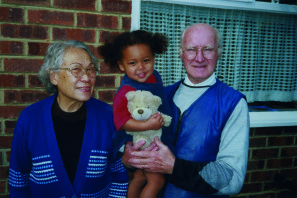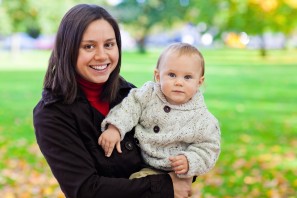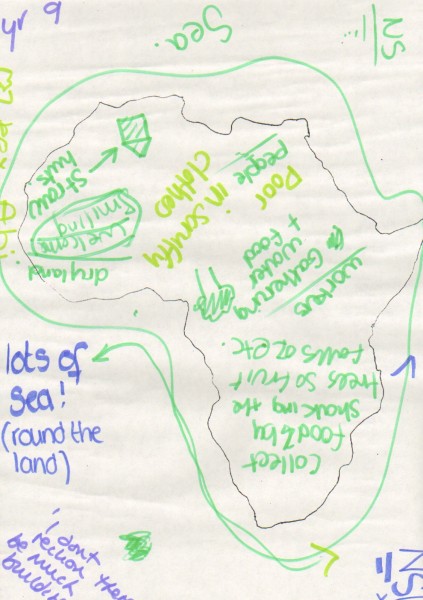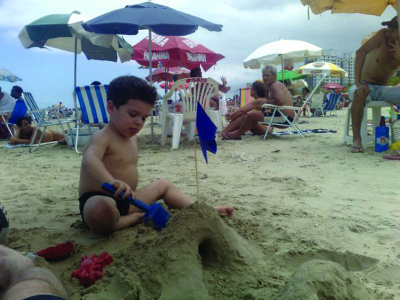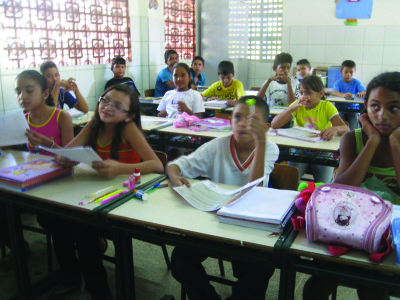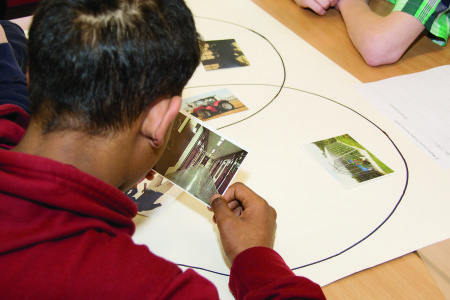Background
I tested the activity in a secondary school in the Czech Republic, with Business Studies pupils in an Introduction to Social Sciences class. Global Development Education (GDE) is not systematically incorporated in the school curriculum, but I try to integrate GDE into the courses that I teach: Introduction to Social Sciences, Social Sciences seminar and Czech Language. The pupils in the class are calm, and they try to complete assigned tasks although sometimes more out of a duty than because they want to. Usually it is the same group of pupils who express their opinions in class. In my opinion, they are used to activities of a similar type. 23 pupils in total participated in the activity.
Initial audit
This was not the first time the pupils had come across the issue of the status of women in society. They had already discussed it within their sociology classes in relation to the issue of gender and within their Study of Religions classes in relation to the attitudes of different religions towards women.
I asked students to share their ideas on statements, such as the following:
- Women should vote for the Parliament.
- Women should make decisions about their wedding.
- Women should occupy high-ranking positions.
- Women should work as scientists.
- Women should educate themselves.
- Women should travel alone.
I also asked them to complete a second sentence after each statement: In our country women can, in other countries women cannot… I expected that I would find out what the pupils think in general about women in modern society, which activities they think are typical, tolerated, or generally accepted for women and which are not. In the beginning, the atmosphere was slightly tense: it was difficult for the pupils to decide which activities the women should do, or, on the contrary, which activities they should not do (e.g. leaving the care of children to another person).
The pupils mostly responded similarly; they differed primarily in their opinions about the activities that are dangerous for women. In general, girls were more positive, and they had a tendency to place women above men for example: I think that women can contribute to science even more than men, Every woman should have the final say on the wedding, The wedding should be organized as she wishes, Women are smarter.
Analysis of the responses
The pupils´ arguments in the following discussion were mostly very general, with typical answers such as Women cannot be discriminated against or that women Have a right to it.
During the first audit, the pupils were quite open to the rights and opportunities of women. They were aware of the difference in the status of women in our country compared to other countries (e.g. in some countries women cannot work). Mostly, they did not name the countries where women do not have the right to some activities. Just once they mentioned Muslim countries in general. This assumption was confirmed for them during the following activity, which used many news pieces from Muslim countries related to women and their rights.
Pupils’ opinions were often divided on the topics where they saw the difference between women having the right to do something but in reality there being obstacles or recommendations to do otherwise. The responses were related to the issue of raising children, travelling, visiting night clubs, doing physically demanding jobs, managing big companies or playing football. For example the pupils thought that a woman can travel alone if she decides to do so, but they consider it to be dangerous for women solo travellers (she should travel at least in a pair). They have the same opinion of women visiting a night club alone. The women can go alone, but it is better for them to go accompanied.
Regarding physically demanding jobs, some of the pupils even used the phrase Woman is a fragile creature. In relation to the education of children, there is no clear preference for men or women. They feel that both of them should take care of the children. However, there were also some pupils who stated that women were better equipped to raise a child: A woman gave the birth to the child, she should take care of him, or the mother can take care of the child alone without depending on a man. Although most of the pupils think women can manage big companies: If not, it would be discriminatory. There were also some counter-arguments stating it would not be appropriate.
According to some comments, women should not vote for the Parliament because they don´t understand it, they should not be in senior positions, because it is a job for guys. However, I consider these to be typical jokes for this age, rather than their real perspectives of women. The reasons provided for why women have problems driving were more real: Women are more afraid when driving than men, or Women don´t have much talent for driving.
There was an interesting clash of opinions when discussing female scientists. Some of the pupils think that women have a greater potential in relation to science than men. The counter-arguments are not related to the incompetence of women to exercise this profession, but rather to the fact that They would talk too much.
There are certain opinions that prevail in society about both men and women, for example that women are fragile, or that women should be accompanied. The students’ thinking might stem from some objective facts: the case of Czech women travellers kidnapped in Pakistan was being discussed at the time of the activity audit. We cannot ignore the influence of societal stereotypes relating to gender, such as that men are strong, women are fragile. Another interesting notion was that the pupils did not relate the status of women to a particular country or political regime, but to a religion, more specifically to Islam: Women don’t have rights in Muslim countries.
Teaching in-between
Students worked in small groups, mapping out factors affecting women’s rights and opportunities around the world. When searching for information on the internet related to women, the pupils mostly limited their research to Muslim countries. It could also be said that it was easier for them to find news on women specifically from these countries. I personally discovered that it was indeed quite difficult to find news representing all continents when I was searching for different information about modern women for the second activity audit. It is better to search for such information on the websites of organisations that monitor the status of women in the world. The information that the pupils were supposed to search for was related to the focus areas of the activity for example raising children, the choice of a partner and wedding, women in a leading position or women in football.
Unfortunately, the phase between the two activity audits was too short to allow me to set any long-term objectives. My general objective (also within Ethics) was to teach the pupils that they should not stereotype, whether on the level of men, women, elderly, or youth, but that they should try to perceive each person as an individual. Therefore, I did not focus thematically only on women. Within the classes, I dealt with other issues, for example disabled people and ageism. I included the gender issue only just before the activity audit. The activity audit was thus a culmination of the lesson that was fully dedicated to this issue.
The piloted activity was included at the end of the lesson to reflect all the activities that formed this part of the session. Since I adapted the activity slightly, below you can find a more detailed description of the preceding activities and the adapted audit.
Activity A
Alpha Boxes: What is the Woman of the 21st Century Like?
The pupils were given tables with all the letters of alphabet written on them. They were asked to come up with one characteristic for each letter which they thought was typical for a woman of the 21st century. They completed the tables individually.
Afterwards, the pupils worked in pairs of boys and in pairs of girls. In pairs, they informed each other of the content of their tables and were then asked to add five more items to the table after the discussion.
The other part of the activity was also done in pairs. Together, they chose three words from the table that in their opinion best characterized women of 21st century. Each pair was given Post-it notes to write the selected characteristics on and asked to stick them to the corresponding letter in the tables prepared for the whole group. Boys stuck notes to one table and girls to another one. The girls added words like: gentle (2x), intelligent, eager, beautiful, elegant, artificial, homey, lazy, career, motivating, loving, feminine, gentle, moody , active, naïve.
The boys added the following words: intelligent (2x), cheeky, original, temperamental, more compliant, smells nice, single-minded, false, ambitious, attractive, easily offended.
A short discussion followed. I asked the pupils the following questions: Do you see any differences between the tables? Were you surprised by something? Did you have a specific woman in mind when selecting the words? Would your answers be different if you imagined a woman from another country? Do you personally know any foreign women?
Most of the pupils had not imagined anyone specific. One pupil answered that he had imagined his mother. The pupils agreed that the woman they described would live in a metropolis, probably in Europe. Two pupils personally knew a foreign woman (one from Russia, the other from Costa Rica), but they assured the class that these women were no different from themselves. The characteristics the pupils were missing in the tables and which they would add were homey and takes care of the family.
Activity B: News Items
The pupils worked in the same pairs with two items of news, each pair had a different news article related to women from different parts of the world. Their task was to read the news, come up with a title and stick it on the corresponding state on the map of the world.
The pupils found the following titles the most interesting: Parking places for women, Why to avoid walking pets in Riyadh, SMS divorces, Female domination, One-child policy. The pupils who had these news items summarized them briefly for the others.
Within the already established pairs, after reading all the texts illustrating the status of women in the 21st century, the pupils had to choose two characteristics they would now add to the two joint tables. This time, the pupils were given white Post-its notes on which they wrote the characteristics.
The girls added the following words: persevering, oppressed (3x), overlooked, hard-working (2x), ambitious, fighter, ridiculed, strong.
The boys added the following words: stupid, oppressed (2x), restricted, I don´t know, legally incompetent, not equal (with men in some countries), arrogant.
It is interesting that the often-used word oppressed did not appear in the original tables of any of the pupils. It seems, when completing the table for the first time the pupils did not feel that the women of the 21st century were oppressed. At the end of the activity I asked the pupils what they had learnt during the lesson. The answer of one girl was that every woman is different.
Second Audit Activity
The pupils were asked to fill in tables adapted from the first audit by completing unfinished sentences. I selected some statements from the first audit and added two more because they were relevant to the work done within the lesson.
Example of the completed sheet part I.
Choose one of the options and complete the following sentences:
Women should/ should not occupy political posts because
- Women should / should not make decisions about their wedding because
- Women should / should not manage big companies because
- Women should / should not stay on maternity leave because
- Women should / should not educate themselves because
- Women should /should not travel alone because
In contrast to the first audit, the pupils´ answers were more varied. During the first audit they limited themselves to saying because they have a right to it many times. In addition, during the first audit they found it difficult to justify their choices, in the second audit the pupils always provided justifications for their choices.
Interestingly, they emphasized gender equality more saying for example: they have the same rights, there is always a need for two opinions, gender is not important. The boys perceived women in their responses even more positively saying:
First audit: if they are educated enough and self-confident
Second audit: they are single-minded and serious; they are very capable and have a certain sense for leadership
The girls still showed a tendency to define themselves in relation to boys/men, saying: they know more about education. In this area there is space for further work with the pupils. There was also a shift in the perspective some girls had about men (first audit = every woman should have the final say at her wedding versus second audit = it is both the woman´s and the man´s wedding).
The pupils were divided in their responses to the question whether women should or should not fight (with the double meaning of the word). Therefore, it could be interesting to develop this issue further (e.g. which kind of fights are acceptable for women and which are not, what women should fight against, and in which parts of the world women should fight).
The pupils also answered other questions that aimed to find out what they think about the status of women in our country and in other countries.
During the first audit, the pupils only mentioned Muslim countries as examples of countries where the situation of women is different – worse than in our country. During the second audit, the pupils based their answers on the news they had read, and their responses were therefore, to a certain extent, identical; but compared to the first audit they were more specific. There were also some new facts such as the reference to the registered partnership. It was interesting to observe that in some cases the pupils tended to misinterpret the reality described in the news. An example of this was the lack of the opportunity to vote in South Korea. The pupils probably merged information from two different news articles – the news article from South Korea talked about establishing parking spaces for women and the news article from Rwanda covered elections which resulted in women holding 44 out of 80 seats in the Parliament. None of the news mentioned that women were not allowed to vote.
There was also an opinion that in Africa women cannot vote, but in fact one of the news articles from Rwanda explicitly mentioned that women are the majority in Parliament. Uganda was not related to the elections news, but to the entrepreneurial activities of women and to the ban of female circumcision. Still, the pupils twice said that women couldn’t vote in Uganda. The misinterpretation could also caused by some preconceptions about the countries and the status of women in those countries.
There were also some opinions that would need further explanation in order to interpret them correctly, such as: In our country, women may be attractive for men, but in Iran and Iraq they may not. During the first audit, the pupils generally referred to Muslim countries, during the second audit, they were more specific about the countries they referred to. I would definitely include some news articles from Europe in the next audit to have a more complete perspective. Not having any news from Europe could lead to artificially creating two groups of women – European women and other women.
Summary of the experiences
I would suggest dividing the activity into two parts. In the first part, the pupils would focus on the things women can or cannot do, on what is typical, or atypical for them and what is socially acceptable or unacceptable. In the second part, they would focus more on women in the global context. This would provide more space for discussion and allow the teacher to work with some generally repeated opinions, or possibly to search for specific background information on some statements.
I would also adapt the statements on women for pupils of secondary schools and use more controversial ones. For example, during the second audit the statement whether women should or should not fight worked well. There could also be statements like whether women should or should not demonstrate, the statement about driving a car could be changed to piloting an airplane; and the statement about voting for Parliament could be changed to be about becoming Prime Minister.
Featured image from UN Women’s campaign, Credit: Memac Ogilvy & Mather Dubai




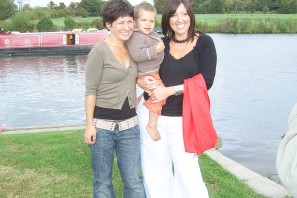
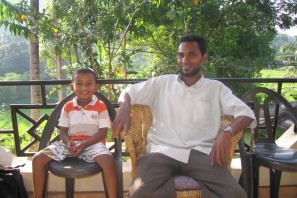
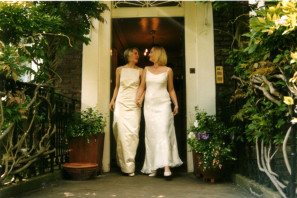

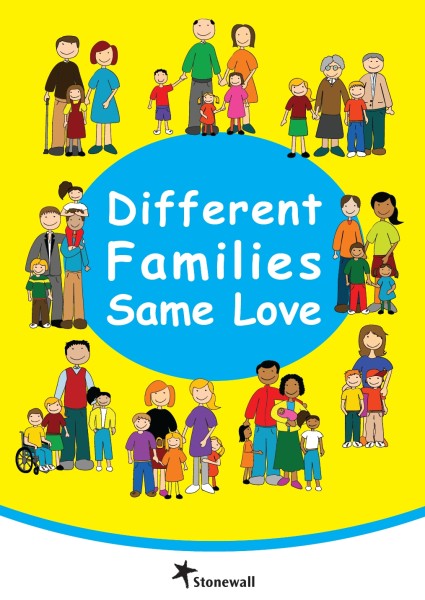 The week started with a school assembly using Todd Parr’s The Family Book – and ideas from the Who do you love? Stonewall lessons. We covered the school in the Different Families, Same love and Real Families Rock posters. We used the Stonewall Different Families, same love sum posters in class to make our own family sums to display.
The week started with a school assembly using Todd Parr’s The Family Book – and ideas from the Who do you love? Stonewall lessons. We covered the school in the Different Families, Same love and Real Families Rock posters. We used the Stonewall Different Families, same love sum posters in class to make our own family sums to display.
